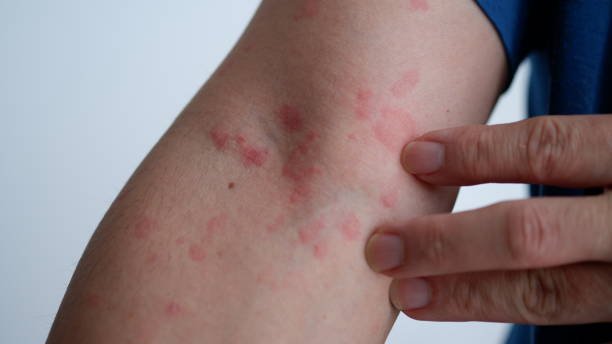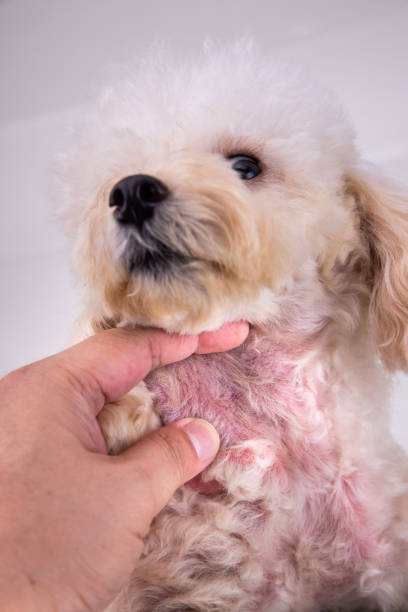The phrase ‘dog dander’ is commonly used when people are discussing allergies and possessing pets in their homes. Read on to know more about this compound specifically if you are a dog lover or a future dog owner. If you are reading this now you might be asking yourself, what is dog dander, how does it impact you together with your cherished ones, and what to do for dog dander? From sneezing fits to itchy eyes or even curiosity about how your four-legged friend affects the interior, this guide will provide all the information about dog dander. No matter if you want to learn more about its definition or tips and tricks for minimizing its role in your life with your canine, you will find all the necessary information below.
What is Dog Dander?
Dog dander is made up of tiny, often microscopic, flecks of skin shed by dogs. These skin flakes can contain proteins from a dog’s saliva, urine, and feces, which are significant allergens for many people. When dogs groom themselves, they transfer these proteins to their fur, which then becomes part of the dander shed into the environment. Dander can easily become airborne and settle on various surfaces, including furniture, bedding, and clothing.
Understanding these components and sources of dog dander is essential for effectively managing and reducing exposure, especially for those with allergies. By keeping living spaces clean, regularly grooming pets, and using air purifiers, dog owners can minimize the impact of dog dander on their health and comfort.
What Does Dog Dander Look Like?

Dog dander is not easily visible to the naked eye because the particles are so small. They often appear as tiny, white, or light-colored flakes, similar to dandruff in humans. Under a microscope, dog dander can be seen as irregularly shaped, jagged flakes. These particles can attach to various surfaces in your home, including furniture, clothing, and carpets, contributing to allergens in the environment. The microscopic view reveals the detailed texture and size of these flakes, highlighting how easily they can become airborne and spread throughout your living space.
Dog Dander Allergies
Dog dander allergies can cause a range of symptoms, including sneezing, a runny or stuffy nose, itchy or watery eyes, and skin reactions such as rashes or hives. These symptoms occur when the immune system overreacts to the proteins found in dog dander. Differentiating between cold and allergy symptoms can be challenging since both can cause sneezing and a runny nose.
However, allergy symptoms often include itchiness and occur shortly after exposure to an allergen, whereas cold symptoms usually develop gradually and may include fever and body aches. Allergies also persist as long as exposure continues, while colds typically resolve within a week or two. If you suspect you have a dog dander allergy, consulting with a healthcare professional for proper diagnosis and treatment is advisable.
Causes and Risk Factors
Dog dander allergies occur when the immune system mistakenly identifies proteins in the dander as harmful substances. This immune response triggers symptoms like sneezing, itching, and congestion. Common allergens in dogs include proteins found in their skin cells, saliva, and urine. Genetics significantly influence the likelihood of developing allergies, with individuals who have a family history of allergies being at a higher risk. Environmental factors, such as the amount of time spent with dogs and the cleanliness of the living environment, also influence the likelihood and severity of allergic reactions.
What to Do For Dog Dander?
- Regular cleaning is essential. Vacuuming with a HEPA filter can help capture dander particles from carpets and furniture. Using air purifiers with HEPA filters can also reduce airborne dander.
- Regularly bathing and grooming your dog can significantly lower the amount of dander they shed.
- Creating pet-free zones, such as bedrooms or specific furniture, can provide a respite from allergens and reduce overall exposure in the home.
Managing Dog Dander Allergies
Managing dog dander allergies involves a combination of over-the-counter medications, prescription treatments, and allergy shots (immunotherapy). Over-the-counter options like antihistamines, decongestants, and nasal sprays can help relieve symptoms such as sneezing, runny nose, and itching. For more severe or persistent symptoms, doctors may prescribe stronger medications, including corticosteroids or allergy-specific drugs. Allergy shots, or immunotherapy, gradually desensitize the immune system to the allergens over time, offering long-term relief. Consulting with a healthcare professional can help determine the best treatment plan for your specific needs.
When to See a Doctor
If you experience severe symptoms, such as difficulty breathing, persistent asthma attacks, or significant discomfort that interferes with daily life, it’s important to see a doctor. Long-term management may require professional guidance to effectively control symptoms and improve quality of life.
Living with Dogs Despite Allergies
Choosing Hypoallergenic Breeds: Some breeds produce less dander than others. Researching and selecting a hypoallergenic breed can help reduce allergy symptoms.
Adjusting Lifestyle and Home Environment: Creating pet-free zones, using air purifiers, and maintaining a rigorous cleaning routine can significantly reduce dander exposure. Regular grooming and bathing of your dog also help minimize dander. Implementing these strategies can help you enjoy the companionship of your dog while managing your allergies effectively.
Conclusion
The article also clearly discusses allergens, particularly dog dander, which is important for people who are allergic. Accurate identification of the signs, sources, and factors that may lead to contact enables one to adequately contain exposure. General cleaning, bathing, and segregation of areas where pets are allowed also go a long way in minimizing dander.
If you are seeking symptom control, there are varying levels of what can be provided with OTC remedies, prescription medicines, injections, and allergy shots. It is strongly advised to seek advice from healthcare professionals when seeking a proactive approach to managing the condition. If the proper approach is taken, one can comfortably live with dogs even with different reactions occurring in the body such as allergies.
RELATED ARTICLES: What Can I Give My Dog Naturally For Upset Stomach
FAQ’s
Do all dogs produce the same amount of dander?
No, the amount of dander can vary depending on the breed. Breeds known for less shedding and potentially lower dander production include poodles, schnauzers, and bichon frises. However, it’s important to remember that no breed is truly “allergen-free.”
How long does dog dander stay in the air?
Dander is lightweight and can stay airborne for several hours, settling on furniture, clothes, and even bedding. This is why you might experience allergy symptoms even after limited contact with your dog. Regular cleaning with HEPA filters is key to managing airborne dander.
Is there anything I can do to reduce the dander on my dog?
Yes! Regular brushing with a high-quality brush can remove loose dander before it sheds and becomes airborne. Consult your veterinarian on the ideal bathing frequency for your dog, as frequent baths can sometimes irritate their skin. Special shampoos designed to reduce allergens might also be an option.
Will neutering/spaying my dog affect dander production?
Spaying or neutering typically doesn’t have a significant impact on dander production. However, some anecdotal evidence suggests hormonal changes might slightly reduce shedding in some dogs.
Is there a specific type of food that helps reduce dander?
While there’s no magic bullet, a high-quality diet rich in omega-3 and omega-6 fatty acids can promote healthy skin and coat, potentially leading to less shedding and dander. Consult your veterinarian for personalized recommendations on your dog’s specific needs.
Are air purifiers truly effective against dog dander?
Air purifiers with HEPA filters can be very helpful in reducing airborne dander particles. Look for purifiers with a Clean Air Delivery Rate (CADR) appropriate for the size of your room.
How often should I wash my dog’s bedding to minimize dander?
Washing your dog’s bedding weekly in hot water (at least 55°C or 130°F) is ideal for removing accumulated dander.
What are some alternative ways to manage dog dander besides medication?
Here are some additional strategies:
- Wipe down your dog after walks: This can help remove pollen and other allergens that might stick to their fur and contribute to dander issues.
- Train your dog good “off-limits” habits: Teach your pup to stay off furniture you use frequently to minimize dander build-up on those surfaces.
- Invest in a good quality vacuum cleaner: Look for a vacuum with a HEPA filter specifically designed for pet hair and dander.
- Consider a steam cleaner: Steam cleaning carpets and furniture can be a deeper cleaning option for removing embedded dander.













